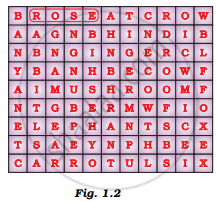Advertisements
Advertisements
प्रश्न
The food synthesised by the plants is stored as ______.
उत्तर
The food synthesised by the plants is stored as starch.
APPEARS IN
संबंधित प्रश्न
What is the scientific name of the animals which is only plant eaters?
What is the scientific name of the animals which is both, plant and meat eaters?
Name a unicellular animal which uses cilia to move food particles into it mouth.
What are heterotrophs? Give one example of heterotrophs.
What are the various types of heterotrophic nutrition?
What are herbivores, carnivores and omnivores? Give two examples of each.
A unicellular animal P having no fixed shape ingests a food particle by forming temporary finger-like projections Q. The food particle is engulfed with a little surrounding water to form a temporary stomach R inside it. The chemicals S from surrounding cytoplasm enter into R and break down food into small and soluble molecules by chemical reactions. The digested food is absorbed directly into cytoplasm by the process T. The undigested food is thrown out of the body by the rupture of a cell organelle U in a process called V.
(a) Name the unicellular animal P.
(b) What are (i) Q, and (ii) R?
(c) Name (i) chemical S, and (ii) process T.
(d) Name (i) organelle U, and (ii) process V.
X is a wild animal which eats only the flesh of other animals whereas Y is a domestic animal which feeds mainly on green grass.
(a) What are animals like X known as?
(b) What are animals Y known as?
(c) Which animal, X or Y, has a longer small intestine? Why?
(d) Name one animal which is like X.
(e) Name one animal which is like Y.
In the expriment of preparing a temporary mount of a leaf peel to observe stomata, we use two liquids other than water. Name these two liquids and state when and why these liquids are used.
Spot as many organisms as possible in the puzzle given in Figure 1.2 by encircling them as shown. Write the names on a sheet of paper and categorise them into autotrophs and heterotrophs. Classify the heterotrophs into herbivores, carnivores, omnivores and saprophytes.

